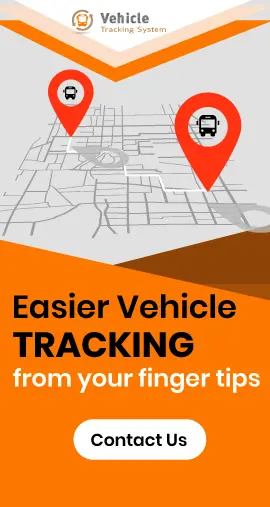11 Tips to Drive Safely in Harsh Weather Conditions
October 25th, 2017
Certainly, you cannot always anticipate a pleasant weather. Weather switches almost unexpectedly – gale, hail storm, or fog appears almost unexpectedly. And, you can assume the risk of driving in such harsh weather conditions.
Nevertheless, you can stay off the road for a few hours. Apparently, fleet drivers cannot remain in an idled state longer, since there will be a delay in the fleet service. Let’s check on the issues of driving in adverse weather and the tips to overcome it.
Consequences of Harsh Weather Conditions
Driving in harsh weather conditions is definitely out of the question. It will ultimately lead to blurred vision, lowered steering skill, friction, etc. that increase the amount of time and space required for stopping the vehicle, and thereby increase the accident rates.
Consequently, performing routine vehicle maintenance, according to seasonal variations is a perfect solution for enhancing your fleet safety. Moreover, you can handle harsh weather conditions by driving cautiously, and by following the tips mentioned below:
1. Proper planning for managing nasty weather
An emergency preparation kit is crucial for your vehicles. And, this kit is intended to have tools and items that assure the safety of drivers. Here is a list of essential items that should be included in the emergency kit:
– Additional pair of gloves
– Rain Jackets
– Woolen blankets or sleeping bags
– Lanterns and/or candles/flambeau
– Snacks and beverages that can be stored
– A sack of sand or salt to avoid being stuck on the roads
– Snow brushes and ice scraper
– Air Compressor
– Jumper cables and tire chains
– Additional windshield washer fluid
– First aid box and essential medicines
2. Allot extra time while preparing schedule
At times, drivers need additional time to drive discreetly and hence it is wise to render sufficient time for preparing the trip schedule. And, during the long trip, it is essential for drivers to drive slowly with reduced anxiety and hence it is wise to allot them extra time.
In addition to this, you can lower the number of stops during the severe weather and notify customers regarding the possible delay, which boost the credibility of your business. However, this will assuage the unnecessary schedule clashes.
3. Practice slow driving
Surely, roads will be slippery and drivers will have visibility concerns during the adverse weather. Hence, high speed driving can constitute dreadful results.
Meanwhile, when you slow down your vehicle by 5-10 mph, you will be able to improve reaction time, especially, while travelling through rough roads.
Such instances are handled effortlessly by installing GPS trackers, which send you instant alerts for over speeding. Nonetheless, with these alerts, you will be able to remain vigilant throughout the trip.
4. Maintain sufficient distance between vehicles
Ensure that there is enough space between your vehicle and the vehicle ahead of yours. Thus, you will obtain ample response time for stopping the vehicle safely, without the harsh braking or swerving.
5. Hold the hand firmly on the steering wheel
It is desirable to hold on a firm grip on the steering wheel as it assists you to have superior control of your vehicle. As a result of this, during adverse weather such as storms, hail, etc., you will be able to react instantly and drive defensively, especially when there is a requirement to deflect or pull over.
6. Always switch on your vehicle lights
In case of harsh weather, switch on the vehicle even during the daytime for the safety of drivers. If the weather is foggy, switch on the fog lights or low beam.
This is because foggy lights are yellowish lights, and hence it can effortlessly penetrate fog, when compared to other ordinary white headlights.
And, these lights are closer to the ground and hence ground will be illumined efficiently. Ensure that you are not switching the high beam lights on, as it actually decreases the driver’s vision as the beam reflects off the water vapour.
7. Brake and accelerate carefully
You should be extra vigilant in harsh weather, especially when you are braking or accelerating. The following tips guide you to brake and accelerate carefully:
> Mildly pump the brakes
By pumping the brakes in adverse weather, you will be able to abate the risk of locking your tires and spinning out. If there is an anti-lock braking system, press and hold brake as far as possible, and thus you will have greater control of your vehicle.
– Never apply brakes during turns
It is wise to avoid applying brake during a turn. However, when you apply brakes, the wheels stop turning, and you will lose the control of your vehicle. If the vehicle skids, remove your foot from the brake, and steer the vehicle towards the skidding direction.
– Handle the puddle carefully
While you drive through a puddle, mildly pump the brakes to generate heat and dry them off.
– Never accelerate quickly
When you accelerate swiftly, your wheels begin to spin rapidly. And, this is inadequate for your tires and at times, it will cause you to hydroplane in moist weather conditions.
Nevertheless, you will receive real-time alerts for sudden braking and rapid acceleration. Hence, you will be able to monitor drivers during adverse weather conditions, prevent their unsafe driving behaviours, and enhance fleet safety.
8. Be prudent around bridges and similar other structures
During the cold weather, it was established that bridges and overpasses freeze rapidly than other structures. Unlike other roads, salt treatment will be inefficient for the bridge roads.
Henceforth, it will be sensible for you to lower the speed and brake, and mildly accelerate for ensuring that your tire don’t spin out.
9. Be watchful for black ice
Black ice is an immense threat, especially while driving in the winter conditions, and also it is quite challenging to recognize the black ice. When you drive your vehicle at night, with the support of headlights, you will able to notice the reflection of the black ice. And, observe whether ice accumulates on the windshield or side mirrors on your vehicle or not.
10. Pull off the road if the weather becomes worse
Ensure that you pull your car away from the traffic and switch on the four way hazard lights for improving the visibility of your vehicle. Also, be cautious enough to pull over, especially during a blizzard. This is because when snow pile up abnormally, your vehicle lay stuck in a drift.
11. Stay in your vehicle, once your vehicle remains stuck
As a matter of fact, if a condition arises where your vehicle becomes stranded, stay inside your vehicle, and avoid harsh weather conditions. Occasionally, switch on the engine to remain warm, without blocking the tailpipe.
In short, there is no guarantee for a pleasant weather, hence, as a responsible driver, it is your duty to amend your driving behavior. Therefore, you will be able to augment your safety as well as the safety of other road users during the inclement weather.

